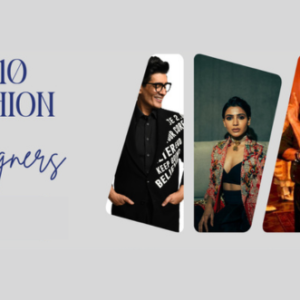Fast-paced world, where trends change quickly, fast fashion has become dominant. However, there is a growing movement that encourages dressing with purpose by embracing ethical clothing. This movement goes beyond style—it’s about aligning your values with what you wear. Choosing ethical clothing isn’t just a passing trend; it’s a conscious decision that supports sustainability, human rights, and environmental care.
What is Ethical Clothing?

Ethical clothing refers to clothing that is made in a way that minimizes harm to people, animals, and the environment. This type of fashion focuses on a few key areas:
- Fair Labor Practices: Ethical clothing ensures that workers are paid fairly and work in safe conditions. Unlike fast fashion, which often relies on sweatshops, ethical brands prioritize the well-being of their workers.
- Environmental Sustainability: Many ethical brands use sustainable materials and eco-friendly production methods. For example, they often choose organic cotton, recycled fabrics, and non-toxic dyes to reduce harm to the environment.
- Animal Welfare: Ethical fashion avoids harming animals by using alternatives to leather, wool, and fur. This ensures that no animals are mistreated in the production process.
- Slow Fashion: Unlike fast fashion, slow fashion encourages people to buy fewer but higher-quality items that last longer. As a result, this helps reduce waste and the demand for mass production.
Why Choose Ethical Clothing?

There are several reasons to choose ethical clothing. Not only is it a responsible choice, but it also has many positive effects. Here are some important benefits:
1. Environmental Benefits
The fashion industry is one of the largest polluters in the world. From water waste to harmful chemicals, the environmental cost is enormous. Ethical brands focus on reducing their environmental impact by using eco-friendly materials, producing less waste, and lowering their carbon footprint. Therefore, when you choose ethical clothing, you’re helping protect the environment.
2. Support Fair Labor
Fast fashion often relies on cheap labor, where workers are paid poorly and work in unsafe conditions. By choosing ethical clothing, you’re supporting companies that pay fair wages and provide safe working environments. In turn, this promotes human dignity and fair treatment of all workers.
3. Durability and Quality
Ethical clothing brands usually prioritize quality over quantity. Fast fashion often leads to a culture of buying cheaply made, short-lived clothes. On the other hand, ethical fashion encourages investing in durable, well-made items that last longer. Ultimately, you save money and help reduce waste by choosing quality over quantity.
4. Aligning with Personal Values
Wearing ethical clothing allows you to express your values through your wardrobe. Whether you care about human rights, animal protection, or environmental conservation, ethical fashion helps you stay true to those beliefs. As a result, dressing with purpose gives you a way to make a statement about what you stand for.
How to Embrace Ethical Clothing

Switching to an ethical wardrobe can be simple if you take it step by step. Here are some tips to help you get started:
1. Research Brands
First, look for brands committed to ethical practices. Many smaller, independent labels focus on sustainability and fair labor. Also, keep an eye out for certifications like Fair Trade, GOTS (Global Organic Textile Standard), and PETA-Approved Vegan. These labels can guide you toward brands that align with your values.
2. Choose Timeless Pieces
Instead of buying into fast-changing trends, focus on timeless and versatile pieces that you can wear for years. A well-fitted pair of jeans or a neutral-colored sweater can be styled in many ways and won’t go out of fashion quickly.
3. Buy Second-Hand
One of the easiest ways to embrace ethical fashion is by buying second-hand clothing. Thrift stores, consignment shops, and platforms like Poshmark or Depop offer unique, affordable options. Not only does this reduce the demand for new production, but it also gives new life to previously owned items.
4. Take Care of Your Clothes
Another important step is taking care of the clothes you already have. Follow the care labels, wash your clothes less frequently, and repair them if needed. This helps extend their life, which reduces the need to buy new ones.
5. Be Mindful of Purchases
Finally, before making a purchase, ask yourself if you truly need it. Avoid impulse buying, and choose pieces that fit well into your current wardrobe. This helps combat the wasteful habits encouraged by fast fashion.
Conclusion
Dressing with purpose by embracing ethical clothing is more than just a fashion choice; it’s a thoughtful way to live. By supporting fair labor, sustainable materials, and quality craftsmanship, you are making a positive impact on both people and the planet. Furthermore, ethical fashion allows you to reflect your values in what you wear.
In a world where convenience often outweighs sustainability, your clothing choices can make a difference. So, why not dress with purpose and embrace ethical fashion for a brighter, more sustainable future?












